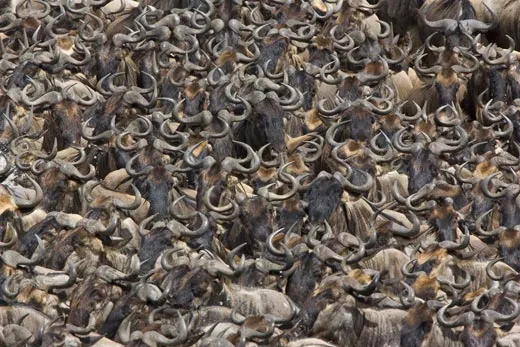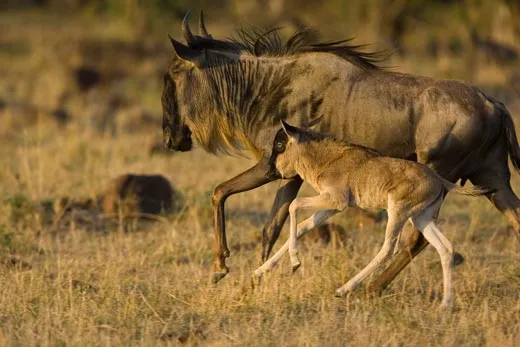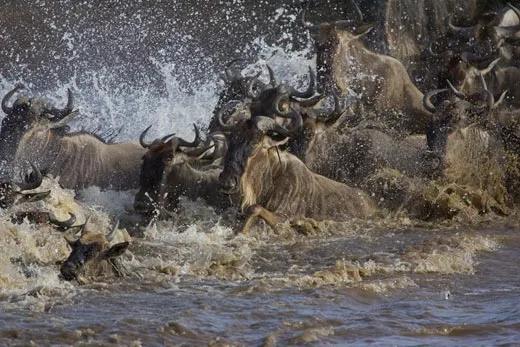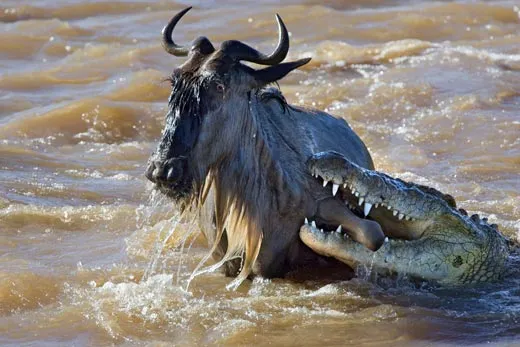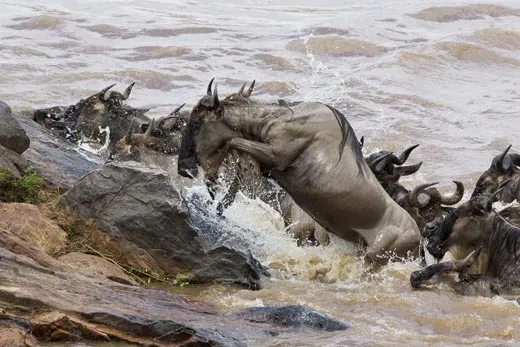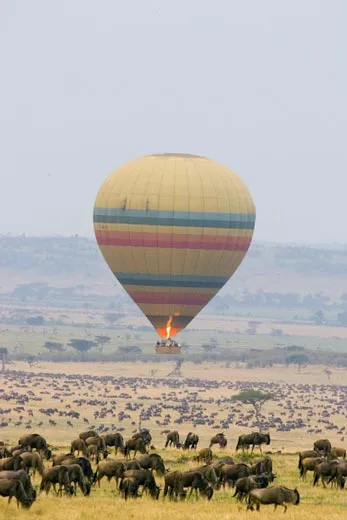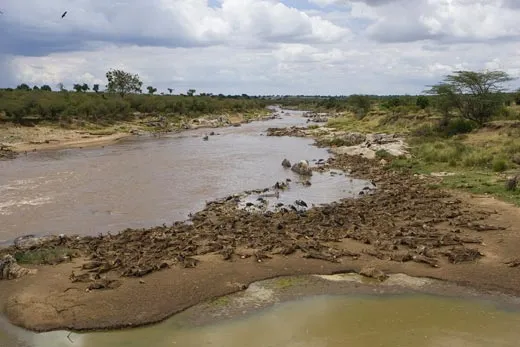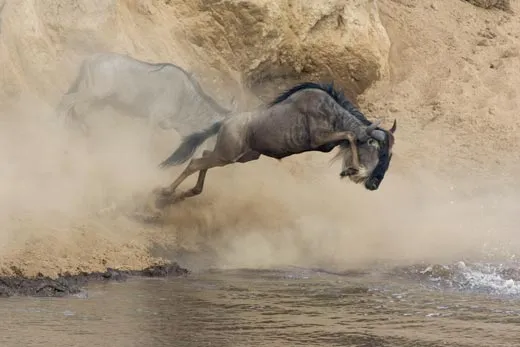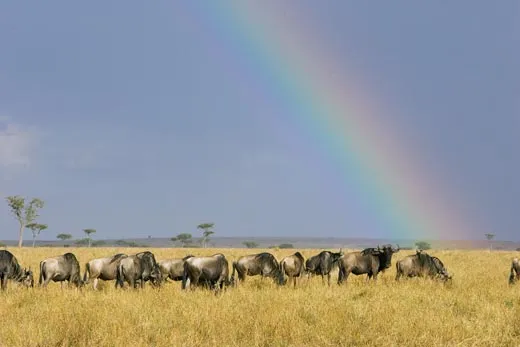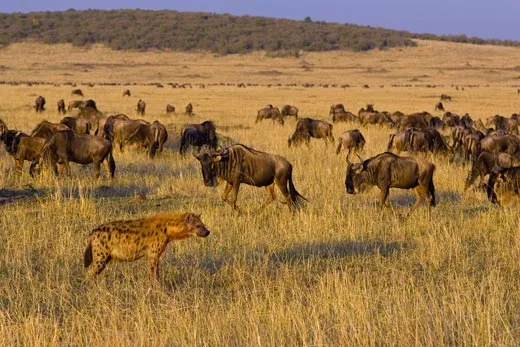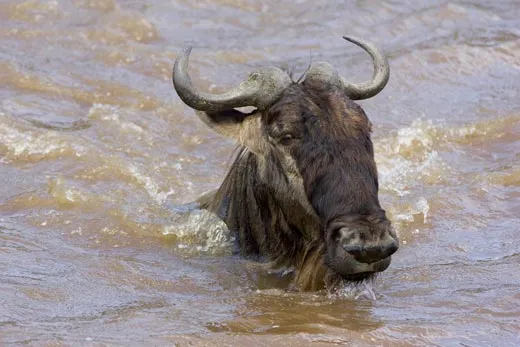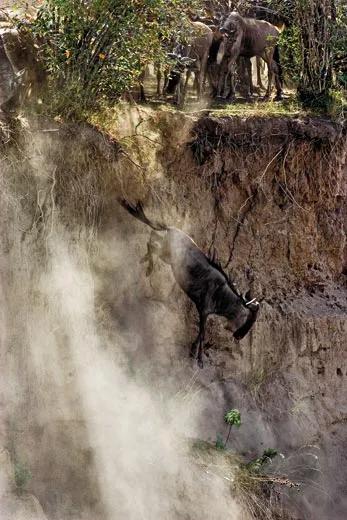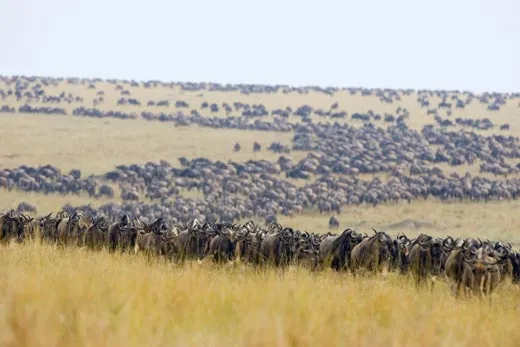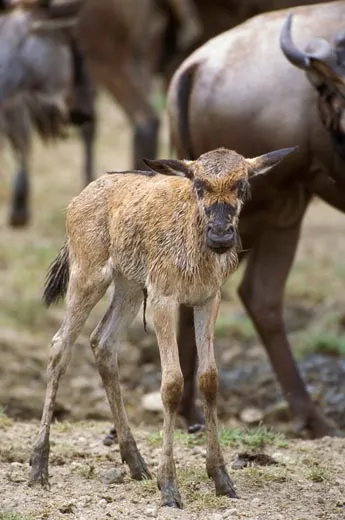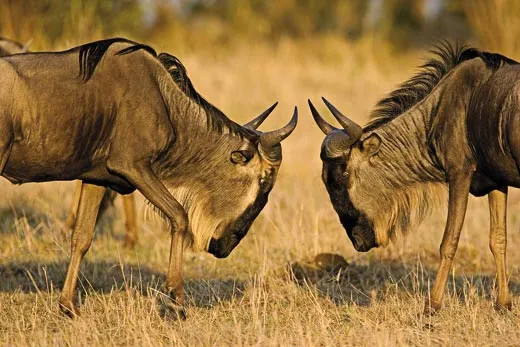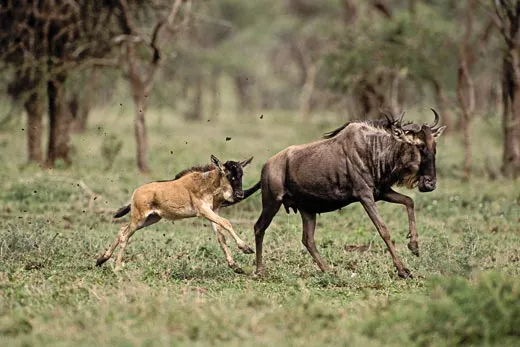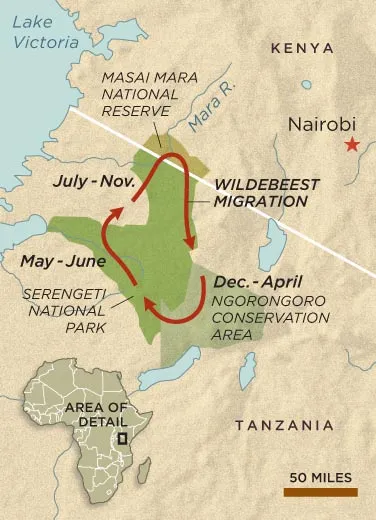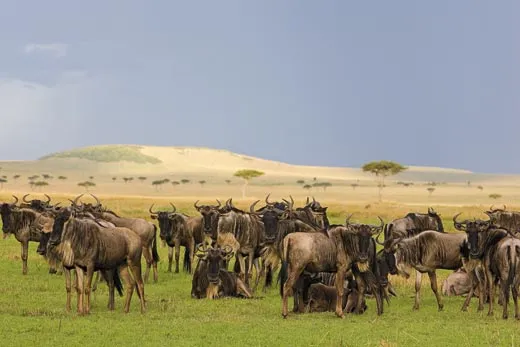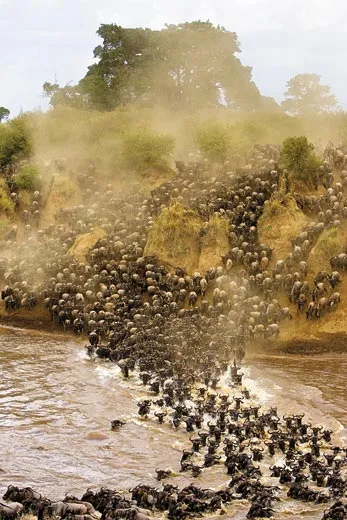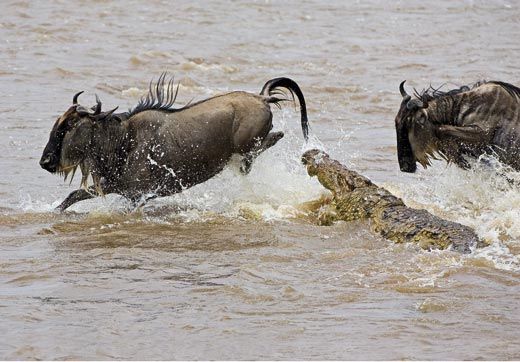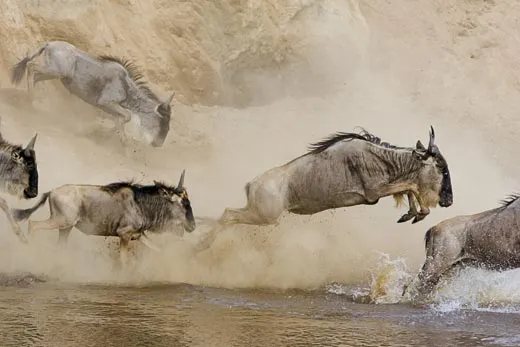For Wildebeests, Danger Ahead
Africa’s wildebeest migration pits a million thundering animals against a gantlet of perils, even—some experts fear—climate change
/https://tf-cmsv2-smithsonianmag-media.s3.amazonaws.com/filer/Wildebeest-migration-water-631.jpg)
When the grass turns brittle and the streams run dry, the wildebeests grow restless. Milling in uneasy circles, scanning the horizon, sniffing the air for distant scents, the shaggy animals move slowly north, looking for the rains that bring new grass—and the promise of life for a population numbering some 1.2 million animals.
“It’s amazing how keyed in they are to the rains,” says Suzi Eszterhas, an American photographer who has lived among the wildebeests for years to document their perilous annual journey, which covers about a thousand looping miles. From the broad Serengeti grasslands on the plains of Tanzania, the wildebeests trudge west through low hills toward Lake Victoria, then northeast to the Masai Mara National Reserve in southern Kenya, a crucial refuge for water and grass in the July to November dry season.
“In the dry season, you see them bunch up on the plains,” says Eszterhas. “The sky is empty except for one faraway rain cloud and—boom—within an hour they’re off in a mass, thousands of wildebeests moving as one, all heading for that single cloud. The earth shudders when they go—you feel their migration as much as you hear or see it.”
Most of it takes place within the Serengeti-Mara ecosystem, a patchwork of national parks, game preserves and conservation areas sprawling over some 10,000 square miles in Tanzania and Kenya. Wildebeests, also known as gnus, shape the ecosystem as they move. They crop grass and fertilize the land with their droppings, while lions, cheetahs, hyenas, crocodiles and other predators depend on them for protein.
Thousands of the ungainly, horned animals fall prey to predators each year, while others perish from broken bones and drowning. One of the most hazardous moments comes when the herd must swim across the Mara River, shortly after passing from Tanzania into Kenya. “Nobody knows why they pick a particular site to cross,” says Eszterhas. “It’s not always the same crossing and there seems to be no rhyme or reason to it. They congregate on the far side, running back and forth, crowding along the bank. They are so skittish when they come to the crossing.”
And for good reason. Crocodiles position themselves nearby, picking off the animals as they flail in the water. Added to this, over the past three years, the Mara River has been running dangerously high, in part because of deforestation in the watershed. Eszterhas was on the bank of the river to meet the wildebeests during the migrations of 2006 through 2009. Camping in Kenya, she parked her Jeep beside the river for 12 or 13 hours a day and hid behind vegetation. “After several false starts, one animal would take the plunge, diving down the bank for the river, then another and another would follow. I was amazed that most of them survived that leap down the bank. Soon they were all in the water, this long line of wildebeests surging across. One would get in trouble, try to turn back in the swift current, and cause others to pile up at the crossing. You’d see the current take so many of them downstream—in a single crossing, at least 5,000 died because of the high waters. It was heartbreaking.”
With human populations booming in East Africa, some scientists have expressed concern that the pressures of development, deforestation and poaching could challenge the wildebeest. The herd reached a near-historic peak of 1.5 million a decade ago and is now down to 1.2 million. The population may also be affected by more intense variations in seasonal flooding and drought, which might be the result of climate change, according to Mark E. Ritchie, a biologist at Syracuse University.
“There are a lot of maybes,” he cautions. “But there is some scientific support that the downward trend in wildebeest numbers could very well be attributed to climate change.” As the Indian Ocean warms and prevailing winds transport moisture over East Africa, more intense periods of rain and drought result, raising the prospect of a new threat to the Serengeti’s keystone species and its migration. “It is very disturbing to think that the migration might be interrupted,” says Eszterhas.
Robert M. Poole is contributing editor at Smithsonian. California-based photographer Suzi Eszterhas travels often to Africa to document wildlife.
